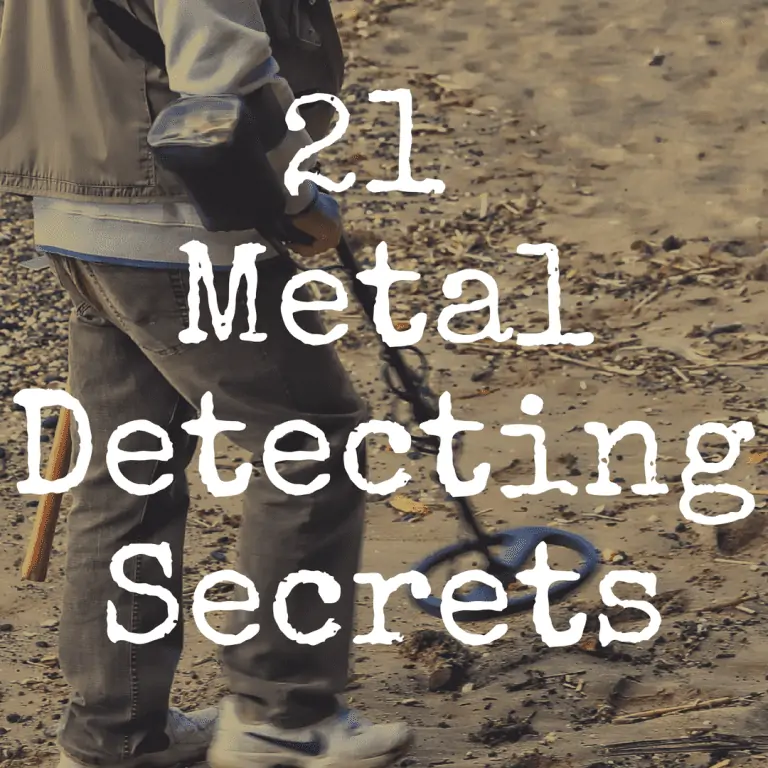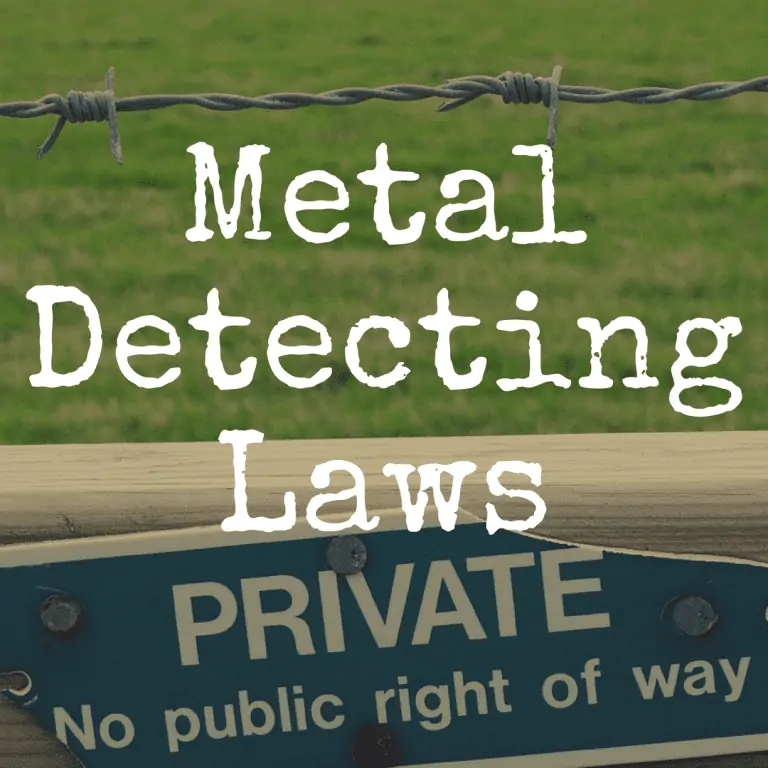How Does a Metal Detector Work?
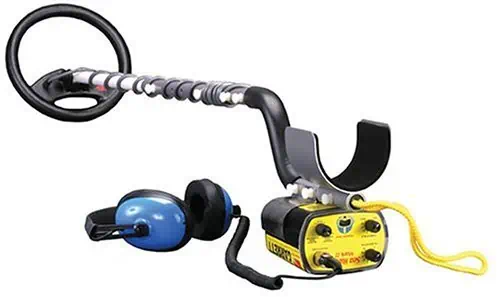
Metal detecting can be a very fun and exciting hobby. If you are lucky enough, it can even be a very lucrative adventure. Each year, more and more metal detectors hit the market to fill the demand for hobbyists that either want to take up the activity or upgrade the equipment they have.
The latest equipment is getting very sophisticated, to say the least. For those of you who are new to this exciting hobby or thinking about trying it, you may not be totally familiar with exactly how a metal detector works. This article will give you an overview of how metal detectors actually operate and will also provide additional help and knowledge about these innovative machines.
And before we move forward, take a look at our interactive table below to get a glimpse of some of the best metal detectors available on the market today:
| Photo | Model | Price | Features |
|---|---|---|---|
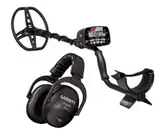 | Garrett AT Max | $$$ | Waterproof to 10 feet |
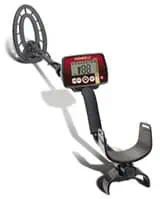 | Fisher F22 | $$ | 9″ Triangulated Concentric Coil |
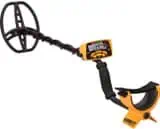 | Garrett Ace 400 | $$$ | 8.5 x 11" DD coil |
 | Minelab Vanquish 540 | $ | Search Modes: Coin, Relic, Jewelry, Custom, All Metal |
A Very Brief History Lesson
One of the first known uses of a metal detector was actually done in haste by renowned inventor Alexander Graham Bell. He was with President James A. Garfield when he was shot and lay dying.
The medical team attending to the President could not find where the bullet had lodged in his body. Graham Bell quickly assembled a device based on the principles of “induction balance” that were first pioneered by a German physicist whose name was Heinrich Wilhelm Dove.
The device did not help save the Presidents life. But it did indeed work as originally designed.
Anatomy of a Metal Detector
In order to learn more about how metal detectors function, you will need to be familiar with their key components. Although all metal detectors do not always look alike, in most cases they work off the same principles, so they all have parts that do similar functions.
Here are the 4 main components that each detector normally has:
Shaft – this is the centerpiece of the detector that all the different components it has attach to. These are often adjustable so you can use them comfortably for your height.
Stabilizer – this is an attachment that is added to the metal detector to make it comfortable to use. And as the name indicates, it stabilizes the metal detector as you move around with it.
Control Box – this is where the brains and power of the machine are located. The control unit consists of a battery, microprocessor, device controls, readout and speakers.
Antenna – this is the bottom part of a detector that is usually round or elliptical in shape. It’s also often called names such as the search coil, search head and loop. It contains the coil(s) that are essential for the device to detect metals.
Knowing the components and what each one does will really help you when it’s time to start considering the idea of buying a metal detector for yourself, your friend or family, or even your child.

Below, please take a look at some of the best selling metal detectors currently available on Amazon:
| BEST SELLERS |
|---|
| 1) Garrett AT MAX |
| 2) Bounty Hunter TK4 Tracker IV |
| 3) Bounty Hunter Gold Digger |
How A Detector Really Works
Metal detectors are complicated pieces of equipment, but the principal behind how they work is somewhat simple.
When you’re outside in the back yard or at the beach, and as you move your detector over the ground, you will at some point come across a buried metal object. At that moment, your metal detector will send you an audio tone to alert you to this fact.
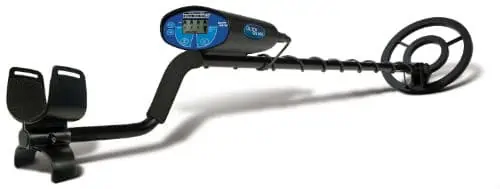
But how did the metal detector sense the metal object below the surface in the first place?
Well, metal detectors work by transmitting a magnetic field and then analyzing that field as it returns from the environment that the signal was transmitted into (the ground, in the case of metal detecting).
The coil on a detector acts as the transmitter, and the magnetic field it transmits is generated by electricity running through the coil. The magnetic field that your detector transmits causes electricity to flow into a metal object when the transmitted magnetic field comes into contact with it.
A second coil located in the search head acts as a receiver. It will detect this change in the magnetic field that takes place when the struck metal object absorbs it and electricity starts to flow through it (It does this by sensing alternating voltages) When a struck metal object causes a change in the magnetic field it is a much weaker one than the one your metal detector sent out originally.
The receiving coil relays this information to the metal detector control box by means of an attached cable. The weaker returning magnetic field signal is first amplified, and when it reaches the control box, the unit will send distinct audio tones to the headset that comes with your metal detector (or headphones that you bought separately).
Additionally, most metal detectors will also have a display with a needle indicator that senses the magnetic field change, as well. Once you get used to the audio tones and needle movement, you will get a better sense of what specific type of metal you’ve discovered buried beneath the earth’s surface. Some detectors actually have technology built into them that help you easily distinguish between certain metals that are underground.
Metal Detecting Technology
There are basically two different types of metal sensing technology that metal detectors for hobbyists use. Here is a little about them and the pros and cons of each one:
This is generally the less expensive type of metal detector technology. They have two distinct coils in the search head that act in combination to detect metals in the ground.
VLF is very popular among experienced treasure hunters because they can differentiate between different types of metals embedded in the ground. This tend to be both highly accurate and sensitive in their readings. A Very Low Frequency metal detector is also best for detecting precious metals like gold that give off an extremely low metal pulse.
This is the newer of the two technologies that are mainly used in metal detectors. It is also the type of technology that is used in detectors for security reasons, such as at airports and municipal courts.
Pulse induction can detect metal objects that are deeper underground than VLF detectors can. Most of these work using only one coil. Devices using pulse induction are extremely accurate at detecting metals underground but have trouble distinguishing between what kinds of metals its discovering. They also tend to be more costly than VLF devices, too.
Still, pulse technology is ideal to use in places where there are a lot of minerals present in the ground.
Why Coil Size & Frequency Matters
Why are there different metal detector coil sizes?
Well, the general rule of thumb is that the larger the coil size the further down in depth that it will detect metal items. And while this is helpful information to know, there is another rule associated with this too: a coil that allows deeper sensing depth will also not be as accurate as a metal detector that has a smaller coil.
Frequencies act in a very similar fashion. Low frequencies penetrate further into the ground but have less sensitivity to smaller, more conductive metals such as gold. Higher frequency detectors are very good at finding even small, conductive metals but they will not be able to sense them as deep in the ground as lower frequencies can.
It should be noted, too, that many metal detectors that are designed to hunt for gold use higher frequencies.
Are There Waterproof Metal Detectors?
Yes, waterproof detectors are common and you’ll most often find them near the beach or other bodies of water. Be warned though—just because a manufacturer says their detector is waterproof does not mean you can submerge it in water. There is a big difference between a waterproof detector that you can splash a little water on and a detector that you can dive shipwrecks with.
The key here is to look at the depth rating of the detector. If it says waterproof up to 10 feet, you don’t want to submerge it for long. On the other hand, if a model says its waterproof up to 250 feet, it’s ok to go diving with that model (do note that you will need special earphones for underwater use).
Don’t Forget
It is very important to keep the antenna (search head) as parallel to the ground as possible when using your detector. The more it’s angled the more ground the signal has to penetrate through to detect a piece of metal. This will make any metals that are in the ground more difficult to detect.
Best Locations to Find Precious Metals
-
Beaches
Beaches are some of the best places to look for metal objects because shifting tides tend to uncover (and then re-cover) them over and over again.
-
Historic Sites
Historic sites such as battlefields are places where detectorists can discover many pieces of history, such as shell casings, bullets and other trinkets left behind by soldiers.
-
Parks
Many people lose valuable items like wedding rings and bracelets when they are participating in activities at the local park or recreation area.
-
Lightly Traveled Backwoods Areas
Things commonly found off the beaten path in backwoods areas are metal arrowheads, trinkets and other items that time has passed by (and that now have value). Some of your best finds will happen in the places you least expect it.
-
Near Old Churches
Churches were not only a place of worship in the old days but were also a place to conduct business nearby. Many metal detecting hobbyists have found valuable coins near old churches.
-
Old Shipwrecks
We have mentioned that certain models of detectors are made to be used underwater. If you have one of these, you may have good luck finding old coins and other memorabilia near shipwrecks.
Final Thoughts
Now that you understand how a metal detector works, you will know what to look for when buying one that fits your needs. It is also recommended that you read about or watch videos on how people use their detectors to search for specific types of metals. Knowledge is the key to becoming successful at finding your target metals. The best metal detector in the world will not do you any good if you don’t know how to use it.
If you enjoyed this article, please “like” us on our new Discover Detecting Facebook page!



